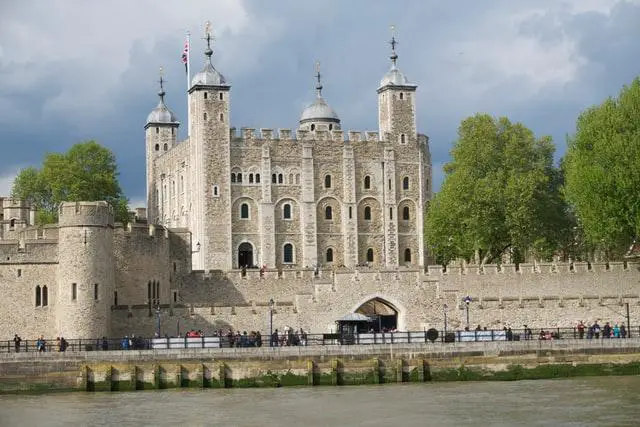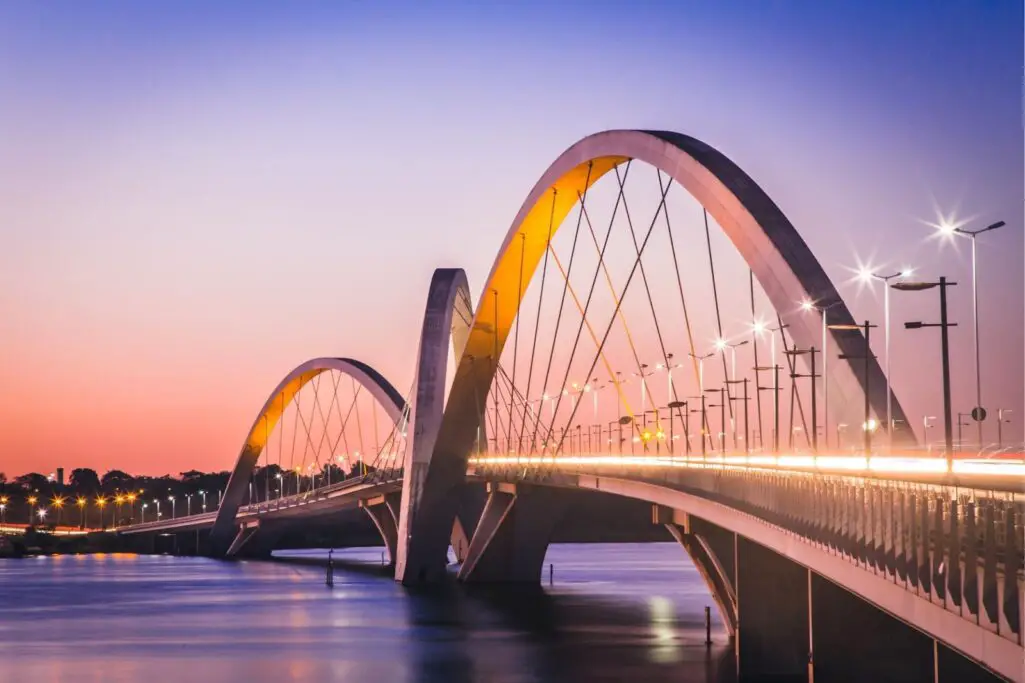The creativity and ingenuity of human beings have shattered the shackles of limitations from time to time. The same was the case in the 1930s, when the determination of creative minds was head-to-head against seemingly insurmountable barriers.
The Golden Gate Bridge is an iconic display of the victory of human tenacity once again.
Where is the famous Red Bridge?
The Golden Gate Bridge, also known as the Red Bridge, is located in San Francisco, United States. It connects the city of San Francisco to Marine County on mainland California across a distance of one mile.
Why was the Golden Gate Bridge Built?
The population of San Francisco boomed due to the Gold Rush, during which more than 300,000 people came to San Francisco in search of gold. The city’s population increased from 49,000 to 150,000 in the decade 1850 to 1860.
It became the economic center of the U.S. However, people from Marine County had no route to reach the city other than ferries. Ferries had limited capacities and took more than 30 minutes to reach the city.
Importantly, the lack of route was hindering the economic growth of the city. Seeing that the problem was stunting the growth of the city, James Wilkins, a former engineering student, proposed the construction of a bridge to fix the problem.
Many designs for the bridge were presented. The project’s cost was estimated at $100 million, and many experts deemed the construction of the bridge in the area impossible due to harsh conditions.
Who built the Golden Gate Bridge?
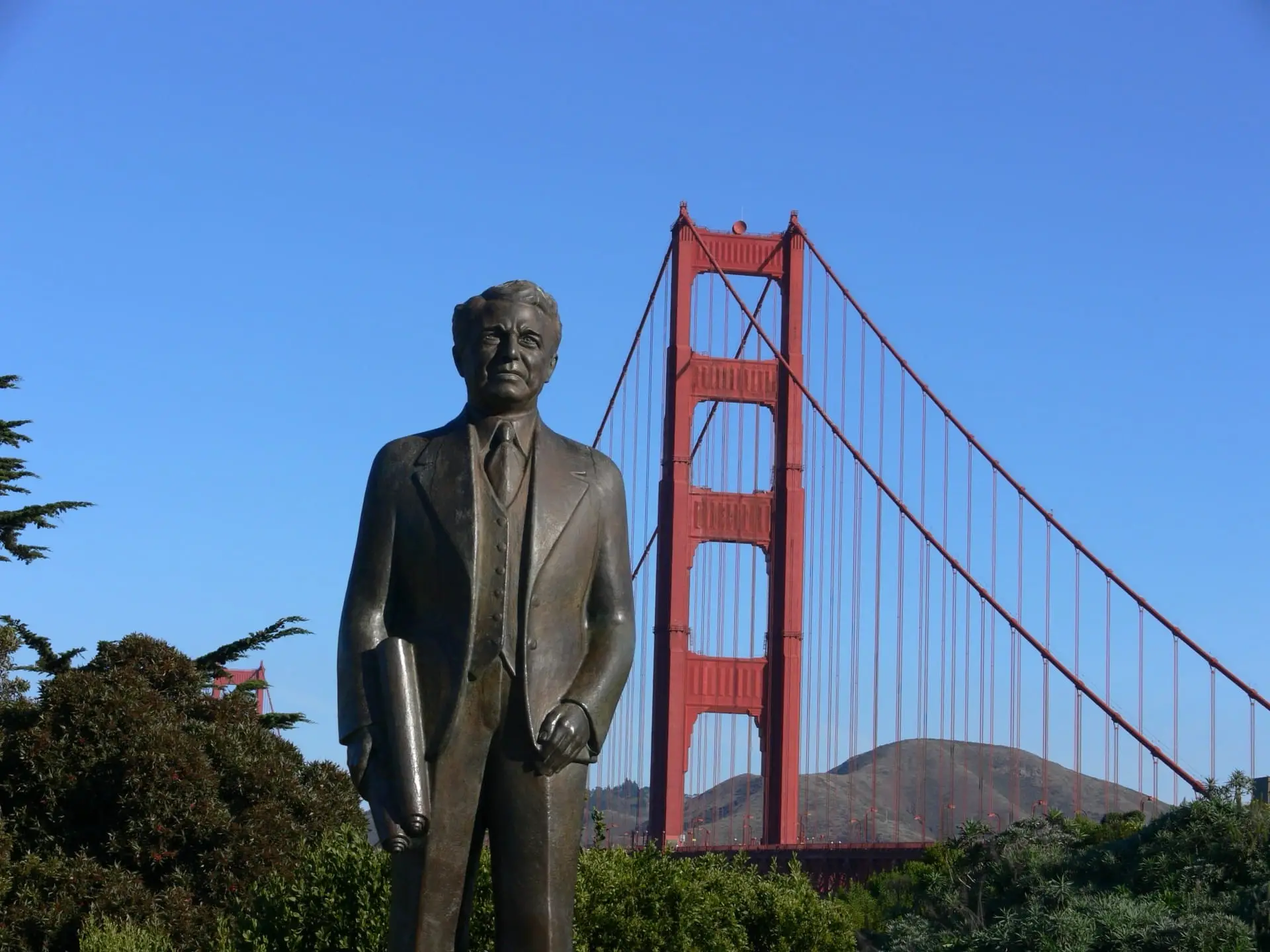
Source: Pikist
The team included Joseph Strauss, a renowned bridge engineer, and Leon Moissieff, as lead engineers, along with Irving Morrow, the Architect, and Charles Alton Ellis, the structural designer of the bridge. Joseph Strauss presented a design at a cost that was half the previously estimated.
His design included the creation of two cantilever beams, which is a beam anchored at only one end, one at each side, with a structure in the middle. Strauss’s design was disliked, and he was persuaded by his team members to agree to a Suspension bridge, which had not been used for large projects at that time.
However, the innovation in steel manufacturing made it possible to make cables of bundled wires which were to act as strong steel rope for large-scale construction.
What were the Challenges Before and During the Construction Phase?
There were enormous challenges before and during the construction phase. Before the construction phase, the U.S. Department of War opposed the construction because of its vulnerability as a target. Environmental activists criticized the adverse impacts the bridge would have on the environment.
The most intense opposition came from ferry companies, as they were at risk of losing their profitable business. They filed more than 2,300 legal disputes against the construction of the bridge. Experts deemed the project impossible due to the factors such as winds, tides, fog, and earthquakes.
After Strauss finally got the design ready, the project’s financing proved to be a big obstacle. The Great Depression made the problem even worse. All the funding evaporated, and the project was in disarray.
Amadeo Giannini, the then president of the Bank of America and a long-term resident of San Francisco, came to the project’s rescue. He bought all the bonds, and Strauss was finally able to get the funds to get the project going.
However, the difficult days were ahead. The construction of the project began in January 1933. Unlike the construction of the north tower on the banks of Marin, the construction of the South Tower was challenging.
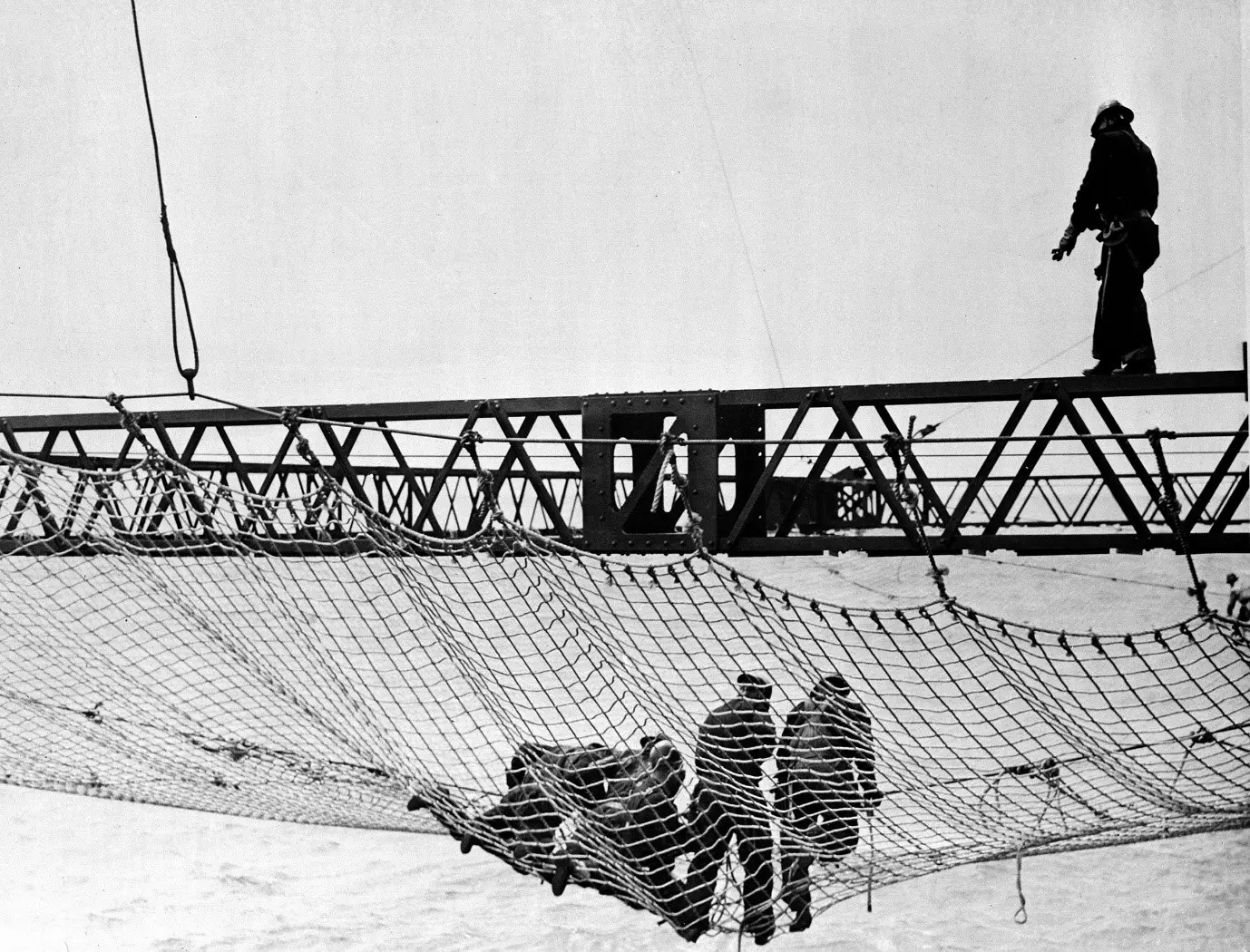
A temporary pier that the team built was destroyed two times. The construction team had to bomb the ocean floor to find a suitable foundation. The suspension of the bridges started in 1935. Strauss took the safety of the workers very seriously. Innovative safety nets were used to protect workers in case of a fall.
However, one incident in February 1937 took the lives of 10 people when a paving machine fell into the net. The bridge finally opened for a pedestrian on 27th May 1937, and after a day, cars followed.
Why was the Golden Gate Bridge colored Red?
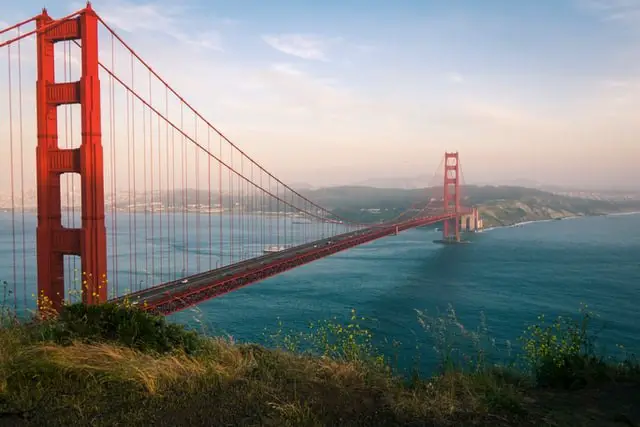
There was a lot of controversy surrounding the color of the bridge. At first, the reddish-orange steel primer was used, which was supposed to be changed at a later stage. People liked the color very much as it blended well with the blue waters.
The Navy, however, wanted the color to be changed to black with yellow stripes to make it visible to ships. The Architect, Irving Morrow, agreeing with the people’s decision, wrote a 30 – Page petition to not change the color of the bridge. His petition was accepted, and the bridge was colored with what is now known as “international orange.”
The Golden Gate Bridge Specifications
| Length (abutment to abutment) | 1.7 miles (8,981ft or 2,737 m) |
| Width of the Bridge | 90 ft (27 m) |
| Height of the Bridge | 744 ft (227m) |
| Total weight of each anchorage | 60,000 tons (54,400,000 kg) |
| Total weight of Bridge, anchorages, and approaches (1986) | 887,000 tons (804,700,00 kg) |
The Golden Gate Bridge Renovation
The bridge has undergone renovation multiple times to make sure that it remains in proper condition. There is 110 full-time personnel for its maintenance. The bridge was designed to withstand the winds of speed 109 km/h. In 1951, the wind blew at a 111 km/h speed, which forced the bridge to shut down for an entire day.
The strength of the bridge was increased in 1982 to withstand a wind speed of 115 km/hr. In 2019, the bridge was made stronger, and now it can withstand up to 160 km/h of wind pressure.
The location of the bridge makes it vulnerable to high–magnitude earthquakes. To solve this problem, energy dissipating devices have been used to make it fitter for the areas’ seismic activity. The original deck of the bridge was made of rebar-enforced concrete, which can cause corrosion. The entire deck was replaced by a steel orthotropic deck panel, which has made the bridge more resistant to saltwater.
Interesting Facts about the Golden Gate Bridge
Here is a list of some interesting facts about the Golden Gate Bridge.
- It just took over four years for the bridge to be completed. The work started on January 5th, 1933 and ended on May 28th, 1937.
- The bridge’s color, which is officially known as “international orange,” is used by NASA for their astronauts’ space suits and by NFL for their football.
- People who survived the fall from the bridge have a specific group name “Half-Way to Hell Club.”
- In January 2014, it was estimated that more than 2 billion people had crossed the bridge since its opening in 1937.
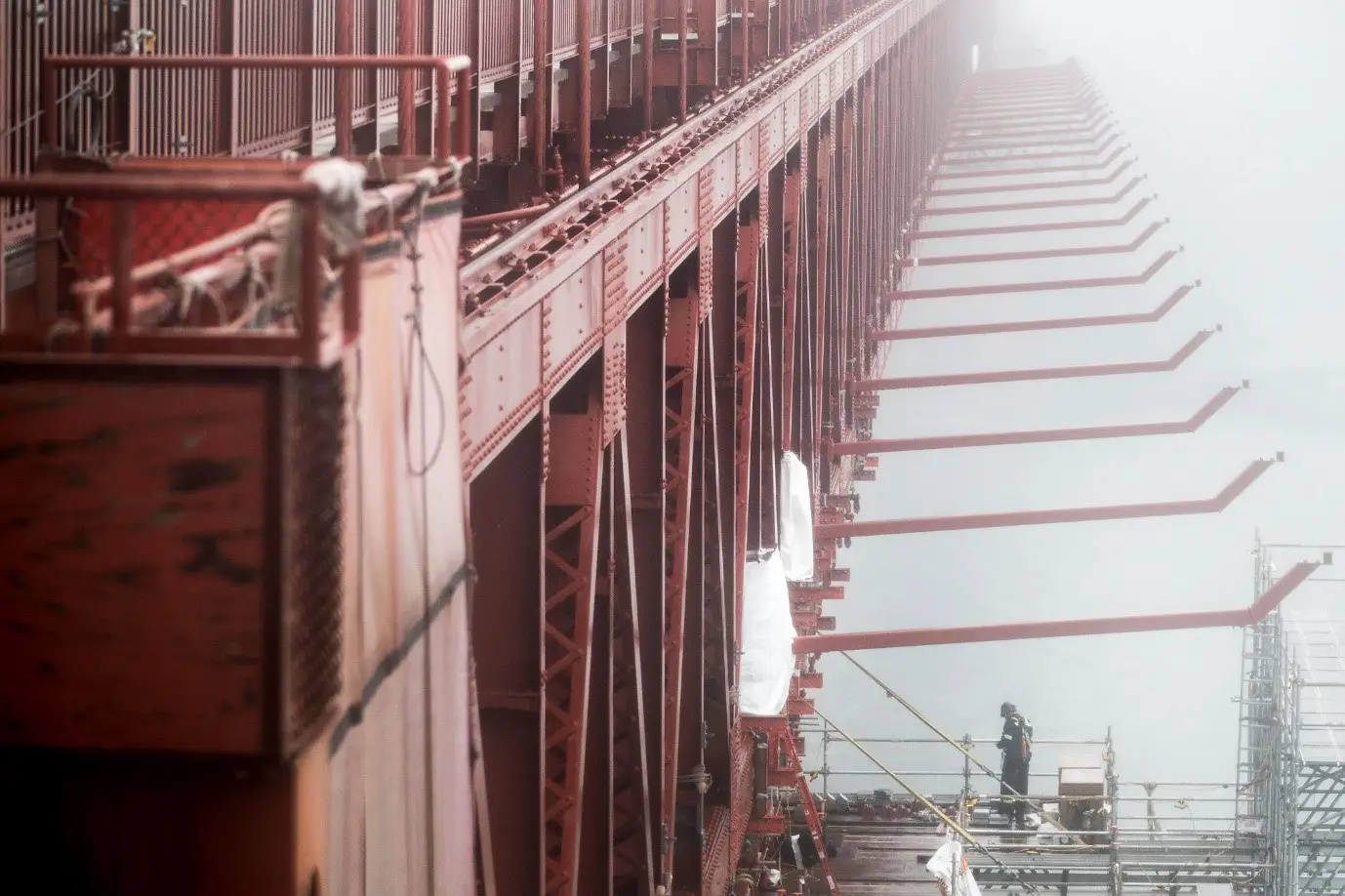
- The Golden Gate Bridge is the world’s second most used suicide spot in the world. Currently, the construction of a suicide prevention net is ongoing, expected to be completed in 2023, which is supported by stainless steel extending 6 meters off the bridge.
- In 1994, the American Society of Civil Engineers published what they called the seven wonders of the Modern world, and the Golden Gate Bridge made the list, as it was the longest suspension bridge of its time.
The Golden Gate Bridge is an iconic bridge and is a hallmark of human creativity. The bridge has stood the tests of time and is a remarkable feat of modern engineering.


